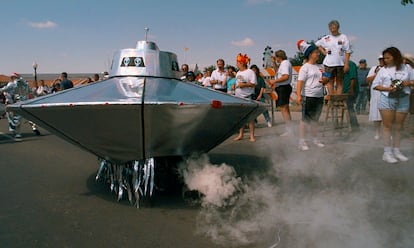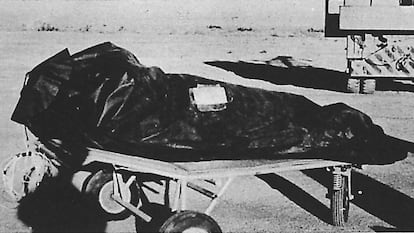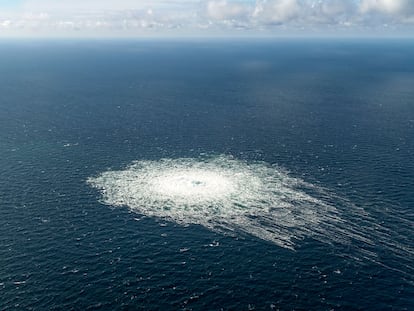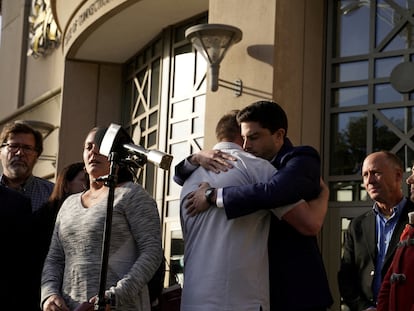The Roswell Incident: exploring its popularity as a conspiracy theory and examining the truth
After a whistleblower told Congress that the US is concealing a program that captured UFOs, we remember the emergence of one of the most enduring UFO conspiracy theories, which is still very much alive to this day

The Roswell incident remains one of the most renowned and debated UFO events in history. It occurred in July 1947 in Lincoln County, New Mexico, where personnel from the Roswell Army Air Field recovered metallic and rubber debris from a military balloon. They issued a press release announcing the discovery of a “flying disc.” Over the years, conspiracy theories have persisted, suggesting that the debris originated from an alien spacecraft and that the government sought to conceal the truth.
Despite multiple investigations discrediting eyewitness accounts and false information, the Roswell myth continues to be scrutinized and discussed due to its cultural significance and the enduring fascination surrounding the possibility of extraterrestrial life and government cover-ups. It has become deeply entrenched in UFO lore, spawning numerous conspiracy theories, books, documentaries, and cultural references, ensuring its enduring place in popular culture and the ongoing allure of the unknown. But how did it all begin?
The origins
The Roswell incident unfolded during the UFO frenzy of 1947, a period marked by the widespread reporting of unidentified flying objects in the United States. It began on June 24 when pilot Kenneth Arnold reported observing disc-shaped objects, which led to the coining of the term “flying saucers.” Similar reports peaked on July 7, although most identifications were either erroneous or the result of hoaxes.
During this time, the United States was actively engaged in developing and testing various experimental aircraft and technologies within the Cold War context. The sightings in 1947 were attributed to early prototypes of secret military aircraft, such as the successful flight of the Bell X-1 in 1947. However, misidentifications and psychological influences played significant roles in the “craze.”
In mid-June, a local rancher named W.W. “Mac” Brazel discovered scattered debris across several acres of his Lincoln County ranch. Initially considering it unremarkable, he gathered the debris for disposal. Unaware of the flying saucer craze due to the absence of phone or radio on his ranch, Brazel only learned about it on July 5 when he drove into Corona, New Mexico, and was informed by some bar patrons. Intrigued, he decided to transport some of the debris to the sheriff’s office in Roswell, where Sheriff George Wilcox contacted the Roswell Army Air Field (RAAF). Major Jesse Marcel and Captain Sheridan Cavitt were assigned to investigate.
On July 8, Marcel brought the material to Colonel William Blanchard, who subsequently reported the finding to General Roger Ramey at Fort Worth Army Air Field. Ramey ordered the material to be flown to their headquarters. That same day, RAAF issued a press release announcing the recovery of a “flying disc.”
However, when Marcel showed the material to General Ramey, both Ramey and his chief of staff Colonel Thomas Dubose identified it as pieces of a weather balloon kite. On July 9, the U.S. Army publicly confirmed that the debris was from an ordinary weather balloon.
The rise of conspiracy theories
The Roswell incident faded from public attention for several decades. However, during the 1970s, hoaxes, legends, and stories of spaceships and alien bodies fueled the popularity of UFO conspiracy theories.
In February 1978, ufologist Stanton Friedman, one of the first civilians to document the incident site, interviewed Jesse Marcel. The army officer claimed that the Roswell weather balloon was a cover story and expressed his belief that the debris was of extraterrestrial origin. Marcel reiterated these claims in subsequent interviews, contributing to the development of a more intricate conspiracy theory.
These statements, coupled with increasing interest in UFOs, propelled the Roswell incident into the spotlight and spread the conspiracy theory further. In 1980, writers and UFO investigators Charles Berlitz and William Moore published a book titled The Roswell Incident, featuring Marcel’s account. The book argued that an alien craft had flown over New Mexico to observe nuclear weapons activity and that the crew was killed by a lightning strike. According to the book, the government then engaged in a cover-up after discovering the crash. This was the first publication to introduce second-hand stories of individuals who claimed to have encountered wreckage and witnessed “alien bodies” before being escorted away by the military.
In 1989, Friedman interviewed former mortician Glenn Dennis, who claimed to have received calls from the Air Base seeking information about body preservation. Dennis also stated that a local nurse had told him she had witnessed an “alien autopsy.” However, this was the first time in 40 years that Dennis had recounted these events, while Marcel consistently denied the presence of bodies.
Several other books were published during the late 1980s as authors recognized the commercial potential of writing about Roswell. These publications presented competing accounts, which proliferated throughout the 1990s. In 1995, the documentary film Alien Autopsy: Fact or Fiction created a sensation when it aired, claiming to feature footage taken by a U.S. military official after the Roswell incident. However, the production was quickly debunked as a creation by Ray Santilli, a London-based video entrepreneur.

So, what really happened?
Following an inquiry by U.S. Congressman Steven Schiff of New Mexico in October 1993, the General Accounting Office launched an investigation. The Office of the United States Secretary of the Air Force was directed to conduct an internal investigation.
The first report was released in 1994 and concluded that the material recovered in 1947 was likely debris from Project Mogul, a top-secret military surveillance program that utilized high-altitude balloons. The secrecy surrounding the recovered material can be attributed to the fact that it was developed during the early stages of the Cold War.
Lieutenant James McAndrew, an Air Force declassification officer, concluded that when civilians and personnel from Roswell Army Air Field stumbled upon the highly classified Project Mogul debris, they were unaware of its nature. This, combined with initial misidentification and subsequent rumors of capturing a “flying disc,” left many unanswered questions that continue to endure.
After the release of the Air Force reports, several books, including Kal Korff’s 1997 work titled The Roswell UFO Crash: What They Don’t Want You To Know, built upon the information presented and concluded that “there is no substantial evidence from any witness that convincingly supports the notion that the object originated from extraterrestrial sources.”
In February 2020, an Air Force historian declassified a report shedding light on a circa-1951 incident. According to this report, two individuals from Roswell were involved in retrieving a weather balloon after an atomic test. They wore ill-fitting radioactive suits and oxygen masks during the operation. On one occasion, they encountered a lone woman in the desert who fainted upon seeing them. To someone unaccustomed to the then-modern gear, these personnel may have appeared alien.
Experts and some ufologists have suggested that the accounts of alien bodies could be attributed to anthropomorphic dummies used in military programs. While Project Mogul did not involve test dummies, the U.S. Air Force did drop such dummies from high altitudes, and both operations occurred in the New Mexico Desert.
Sign up for our weekly newsletter to get more English-language news coverage from EL PAÍS USA Edition
Tu suscripción se está usando en otro dispositivo
¿Quieres añadir otro usuario a tu suscripción?
Si continúas leyendo en este dispositivo, no se podrá leer en el otro.
FlechaTu suscripción se está usando en otro dispositivo y solo puedes acceder a EL PAÍS desde un dispositivo a la vez.
Si quieres compartir tu cuenta, cambia tu suscripción a la modalidad Premium, así podrás añadir otro usuario. Cada uno accederá con su propia cuenta de email, lo que os permitirá personalizar vuestra experiencia en EL PAÍS.
¿Tienes una suscripción de empresa? Accede aquí para contratar más cuentas.
En el caso de no saber quién está usando tu cuenta, te recomendamos cambiar tu contraseña aquí.
Si decides continuar compartiendo tu cuenta, este mensaje se mostrará en tu dispositivo y en el de la otra persona que está usando tu cuenta de forma indefinida, afectando a tu experiencia de lectura. Puedes consultar aquí los términos y condiciones de la suscripción digital.
More information
Archived In
Últimas noticias
There is as much life left to discover on planet Earth as that which is already known
Dozens presumed dead, around 100 injured in fire at Swiss Alps bar during New Year’s celebration
Is porn for women different from conventional porn? We spoke to those who make it
Cartagena de Indias is sinking: What can the city do to mitigate it?
Most viewed
- Reinhard Genzel, Nobel laureate in physics: ‘One-minute videos will never give you the truth’
- David King, chemist: ‘There are scientists studying how to cool the planet; nobody should stop these experiments from happening’
- Sinaloa Cartel war is taking its toll on Los Chapitos
- Oona Chaplin: ‘I told James Cameron that I was living in a treehouse and starting a permaculture project with a friend’
- The Interoceanic Train, the Mexican alternative to the Panama Canal











































